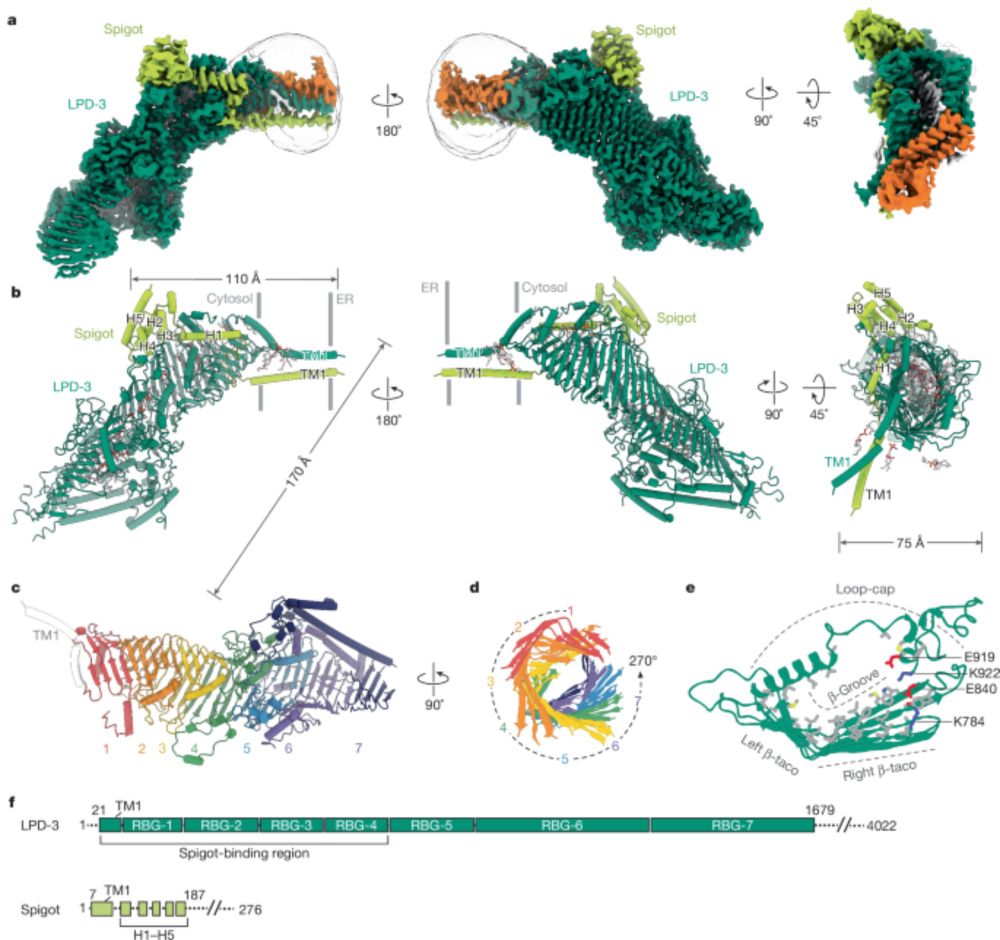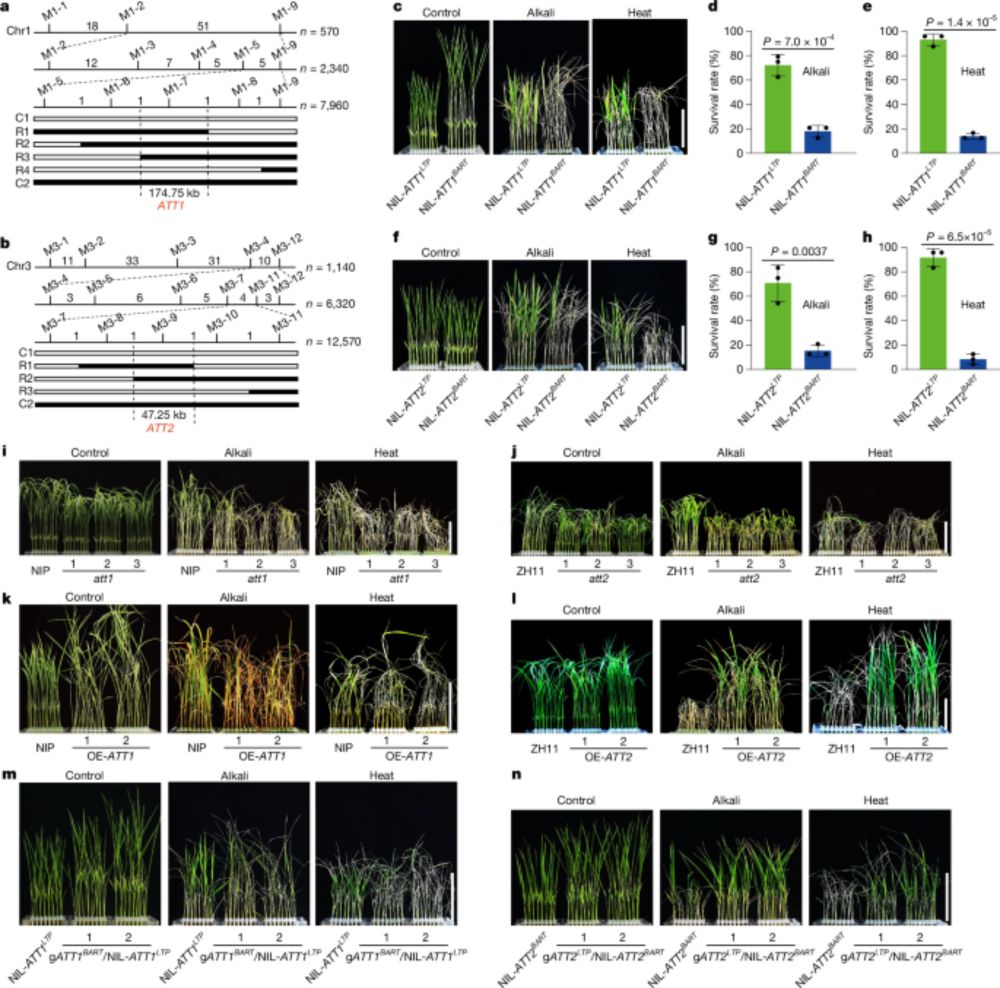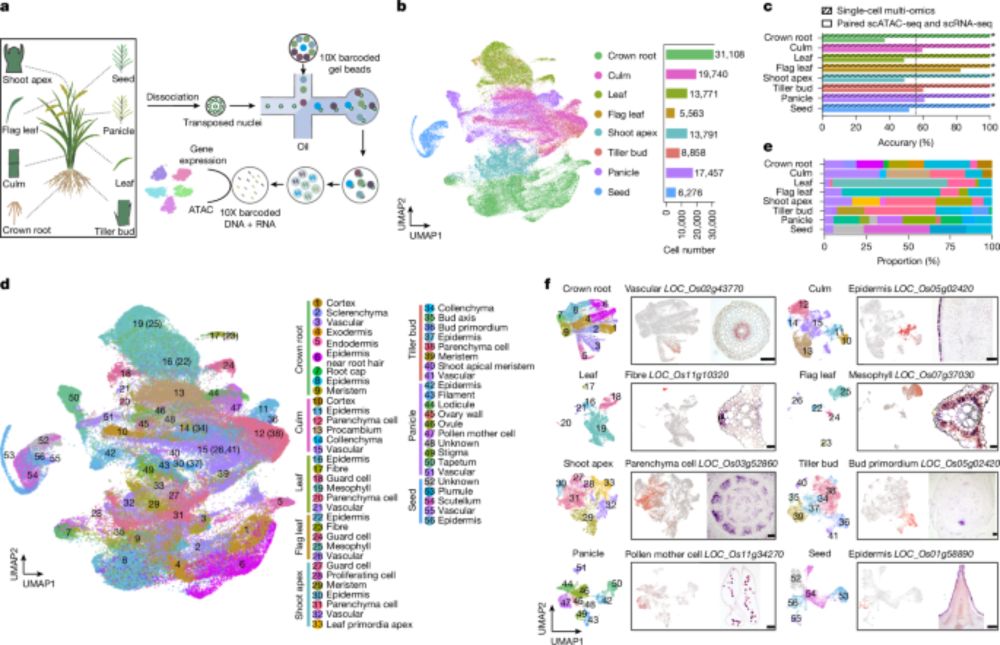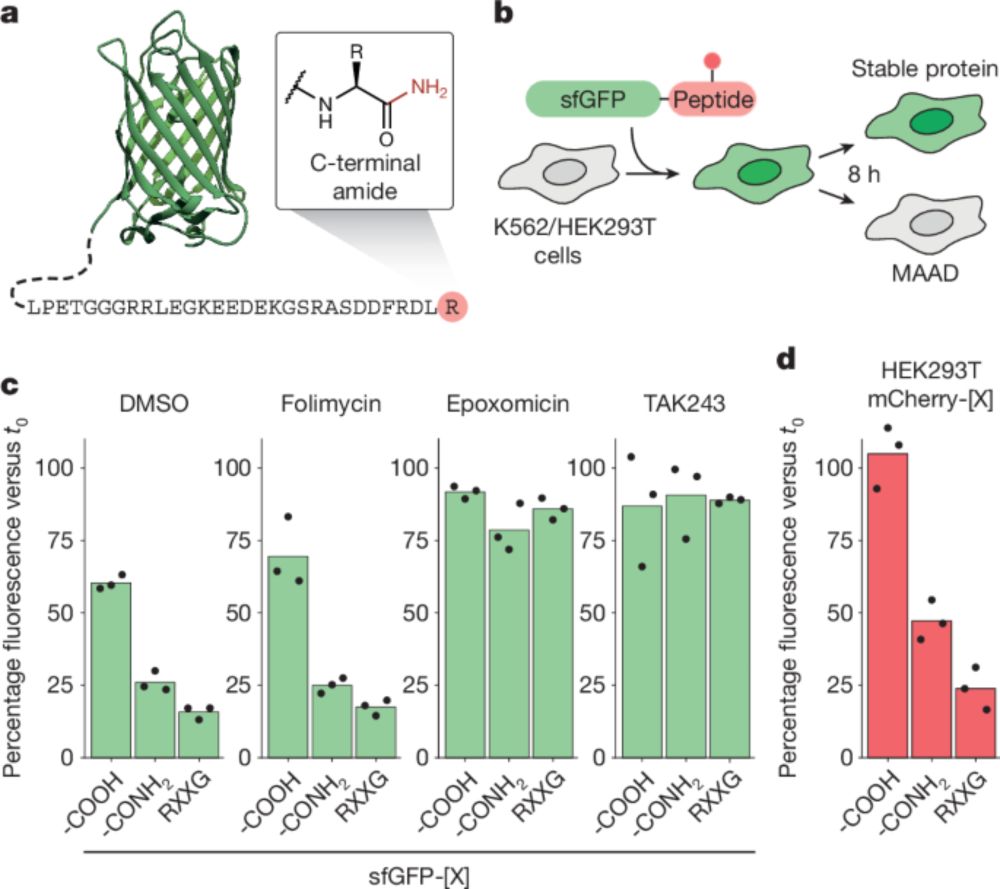Sadaf Shadan
@sshadan.bsky.social
270 followers
140 following
27 posts
Senior Editor @Nature handling manuscripts in general cell biology and plant biology. Views expressed here are my own.
Posts
Media
Videos
Starter Packs
Sadaf Shadan
@sshadan.bsky.social
· Jul 24

Integrated biotechnological and AI innovations for crop improvement - Nature
The integration of omics technologies, genome editing and protein design with artificial intelligence (AI) promises rapid advances in the field of crop improvement that will improve global food securi...
www.nature.com
Sadaf Shadan
@sshadan.bsky.social
· Jul 24

Remodelling autoactive NLRs for broad-spectrum immunity in plants - Nature
Cleavage by pathogen-derived proteases of an engineered chimeric protein activates its plant immune receptor component, enabling broad-spectrum resistance to pathogens in plants.
www.nature.com
Sadaf Shadan
@sshadan.bsky.social
· Jul 24

Three-step biosynthesis of salicylic acid from benzoyl-CoA in plants - Nature
The salicylic acid (SA) biosynthesis pathway—involving ligation of benzoyl coenzyme A and benzyl alcohol to give benzyl benzoate; hydroxylation of benzyl benzoate to give benzyl salicylate; and cleava...
rb.gy
Sadaf Shadan
@sshadan.bsky.social
· Jul 13
Sadaf Shadan
@sshadan.bsky.social
· Jun 16

Transparent peer review to be extended to all of Nature’s research papers
From today, all new submissions to Nature that are published will be accompanied by referees’ reports and author responses — to illuminate the process of producing rigorous science.
www.nature.com
Sadaf Shadan
@sshadan.bsky.social
· Jun 5

Probing condensate microenvironments with a micropeptide killswitch - Nature
Targeting a non-natural micropeptide ‘killswitch’ to several biomolecular condensates altered condensate compositions and revealed condensate functions in human cells
www.nature.com
Sadaf Shadan
@sshadan.bsky.social
· May 28

EndoMAP.v1 charts the structural landscape of human early endosome complexes - Nature
A study presents EndoMAP.v1, a resource that combines information on protein interactions and crosslink-supported structural predictions to map the interaction landscape of early endosomes.
www.nature.com
Sadaf Shadan
@sshadan.bsky.social
· May 28

Locum Associate or Senior Editor, Nature (Biological, Clinical, and Social Sciences)
Job title: Locum Associate or Senior Editor, Nature (Biological, Clinical, and Social Sciences) Location: New York or Berlin (Hybrid working pattern) Deadline: June 11th , 2025 About Springer Nature G...
springernature.wd3.myworkdayjobs.com
Sadaf Shadan
@sshadan.bsky.social
· Apr 30

Single-cell transcriptomics reveal how root tissues adapt to soil stress - Nature
Single-cell RNA sequencing and spatial transcriptomic approaches reveal major expression changes in outer root cell types when grown in soil versus gel conditions, and also uncover how root tissu...
www.nature.com
Sadaf Shadan
@sshadan.bsky.social
· Apr 23

Structural basis of lipid transfer by a bridge-like lipid-transfer protein - Nature
The LPD-3 complex structure reveals protein–lipid interactions that suggest a model for how the native LPD-3 complex mediates bulk lipid transport and provides a foundation for mechanistic studies of ...
shorturl.at
Sadaf Shadan
@sshadan.bsky.social
· Mar 19

Overlapping nuclear import and export paths unveiled by two-colour MINFLUX - Nature
High spatiotemporal precision tracking using 3D MINFLUX shows that nuclear import and export occur in overlapping regions of the central pore, providing insight into transport across the nuclear pore ...
www.nature.com
Sadaf Shadan
@sshadan.bsky.social
· Mar 5

TIR1-produced cAMP as a second messenger in transcriptional auxin signalling - Nature
cAMP produced by the TIR1/AFB receptors of the main endogenous developmental plant hormone auxin acts as a true second messenger, revising the established paradigm of transcriptional auxin signalling.
www.nature.com
Sadaf Shadan
@sshadan.bsky.social
· Feb 25

Dual regulation of mitochondrial fusion by Parkin–PINK1 and OMA1 - Nature
We find that, in mice, although the individual loss of Parkin or OMA1 does not affect mitochondrial integrity, their combined loss results in small body size, low locomotor activity, premature death, ...
www.nature.com
Sadaf Shadan
@sshadan.bsky.social
· Feb 12

Balanced plant helper NLR activation by a modified host protein complex - Nature
In Arabidopsis, mechanisms for NRG1A activation by recognition of a modified host EDS1–SAG101 complex, and NRG1A inhibition by NRG1C through sequestration of activated EDS1–SAG101, show activation and...
www.nature.com
Sadaf Shadan
@sshadan.bsky.social
· Jan 30

Autoactive CNGC15 enhances root endosymbiosis in legume and wheat - Nature
Nuclear calcium oscillations initiate plant–arbuscular mycorrhiza and nitrogen-fixing bacteria symbioses for nutrient acquisition, with a newly discovered autoactive CNGC15 mutant enhancing ...
www.nature.com
Sadaf Shadan
@sshadan.bsky.social
· Jan 29

Fine-tuning gibberellin improves rice alkali–thermal tolerance and yield - Nature
Precise regulation of the phytohormone gibberellin to optimal levels may not only confer alkali–thermal tolerance to Green Revolution rice varieties but may also further enhance their yield, and ...
www.nature.com






